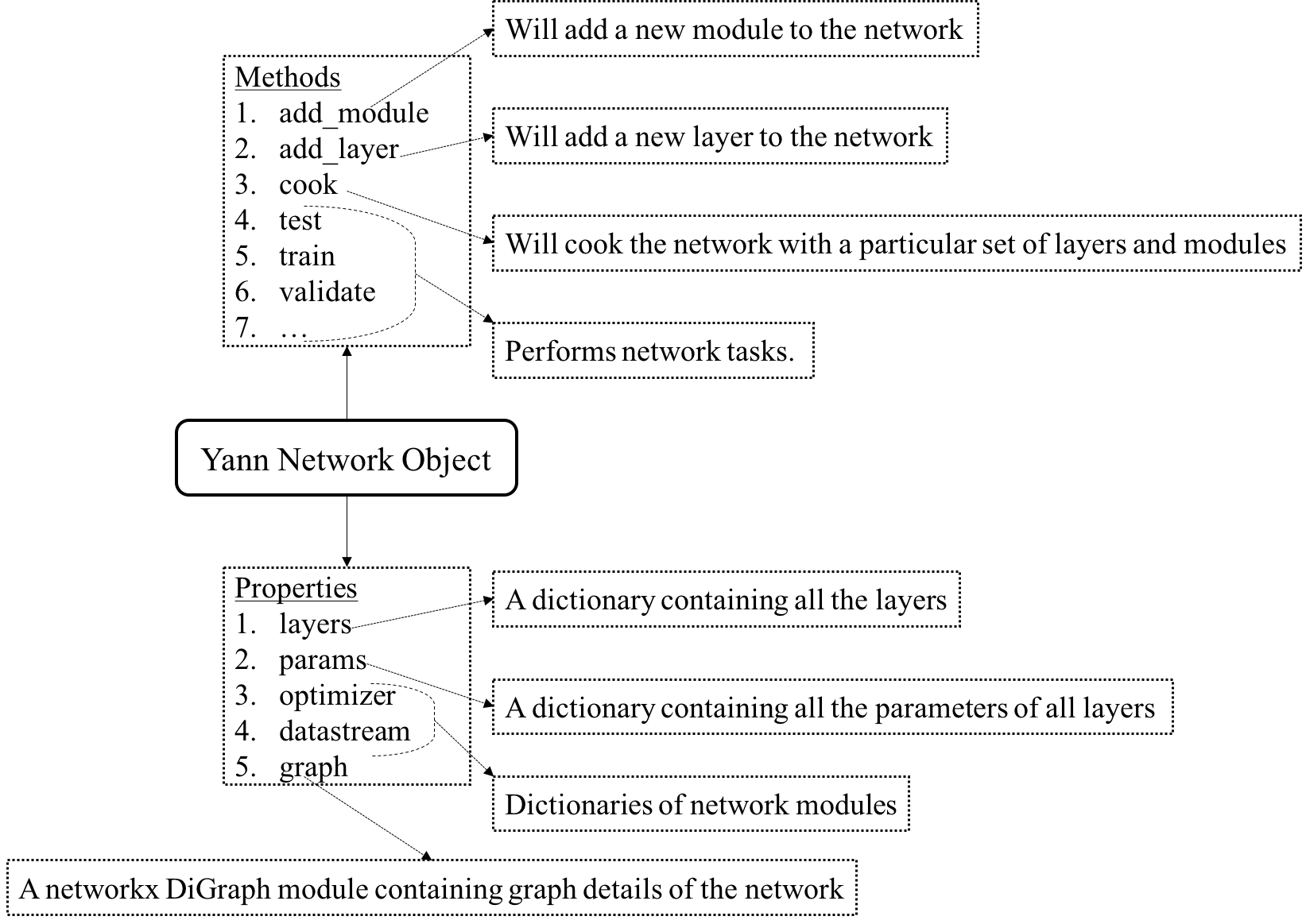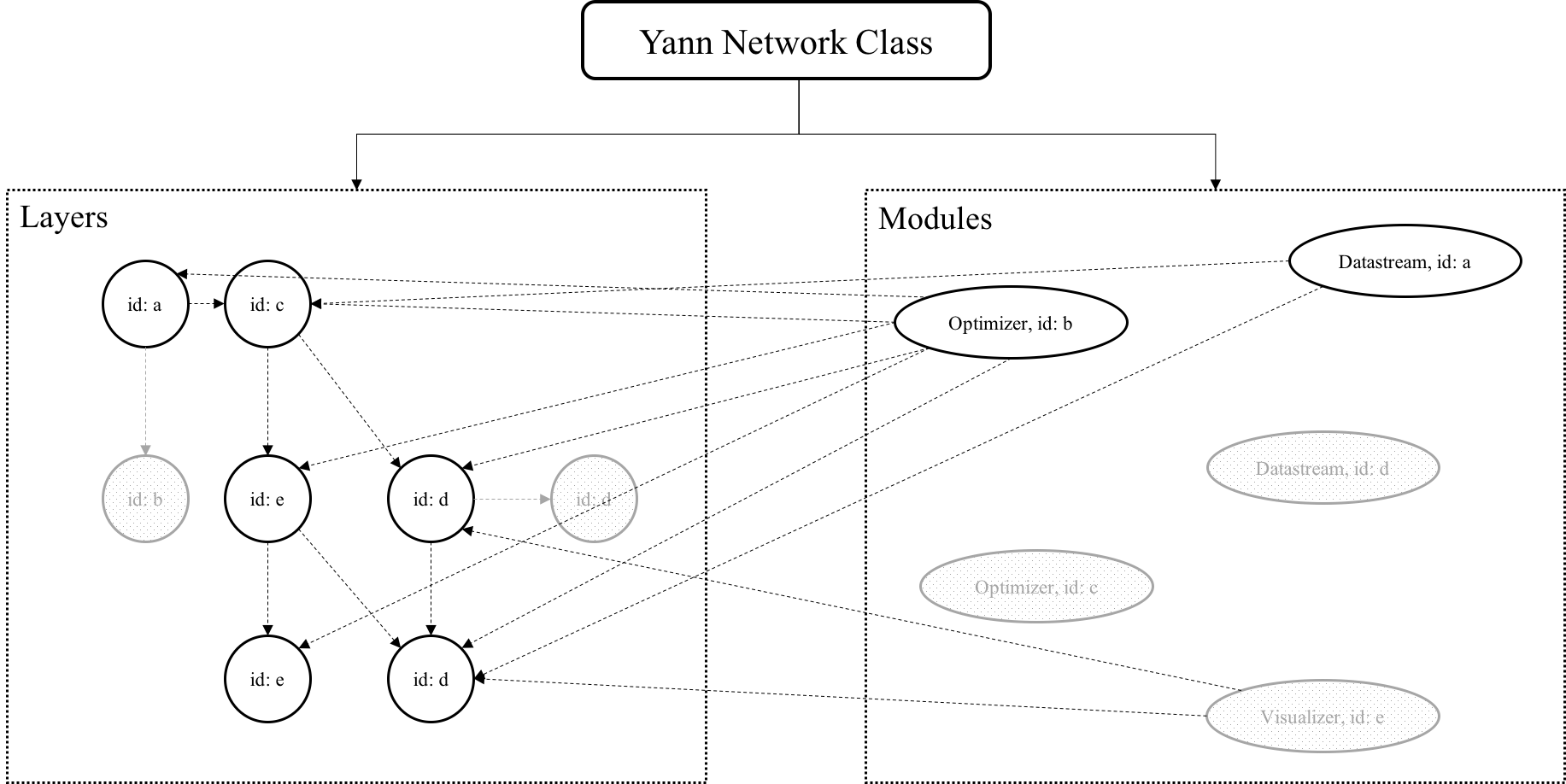Structure of the Yann network¶

The core of the yann toolbox and its operations are built around the yann.network.network
class, which is present in the file yann/network.py. The above figure shows the organization of
the yann.network.network class. The add_xxxx() methods add either a layer or module as
nomenclature states. The network class can hold various layers and modules in various connections and
architecture that are added using the add_ methods.
Verbose¶
Throughout the toolbox, various methods take an argument called verbose as input. verbose is
by default always 2. verbose = 1 implies a silent run and therefore the code doesn’t print
anything unless absolutely needed. verbose=2 prints quite the standard amount of information and
verbose==3, which is friendly when being used for debugging prints annoyingly too much
information.
Initializing a network class¶
A network pbject can quite simply be initialized by calling
from yann.network import network
net = network()
Each layer takes in as argument While prepping the network for learning, we can (or may) need only certain modules and layers. The process of preparing the network by selecting and building the training, testing and validation parts of network is called cooking.

The above figure shows a cooked network. The objects that are in gray and are shaded are uncooked parts of the network. Once cooked, the network is ready for training and testing all by using other methods within the network. The network class also has several properties such as layers, which is a dictionary of the layers that are added to it and params, which is a dictionary of all the parameters. All layers and modules contain a property called id through which they are referred.